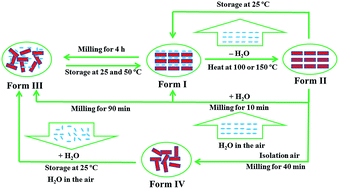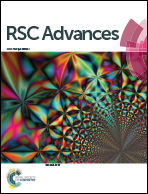Four solid forms of tauroursodeoxycholic acid and solid-state transformations: effects of temperature and milling
Abstract
Four solid forms of tauroursodeoxycholic acid (TUDCA) were investigated by X-ray diffraction, morphological analysis, thermogravimetry, differential scanning calorimetry, and near-infrared (NIR) spectroscopic analysis. Results indicated that TUDCA existed as dihydrate (Form I), anhydrate (Form II), amorphous dehydrate (Form III), and amorphous anhydrate (Form IV). Solid-state transformations of TUDCA were extensively investigated and shown to be significantly affected by temperature and milling. Direct transformation of Form I into Form II occurred at high temperatures (100 °C and 150 °C), whereas that of Form II into Form I easily occurred at 25 °C. During milling, Form II was initially transformed into Form I within 10 min and then completely transformed into Form III after 100 min upon exposure to air. Moreover, the transition time from Form I to Form III was shorter than that of the separate milling process of Form I. However, Form II was directly transformed into Form IV when milled in the absence of air. In-line NIR spectroscopy was successfully applied for the rapid analysis of TUDCA solid-state transformations (Form II to Form I and Form IV to Form III) at ambient temperature. Stability investigation showed that the stability of the four TUDCA solid forms varied under different conditions.


 Please wait while we load your content...
Please wait while we load your content...